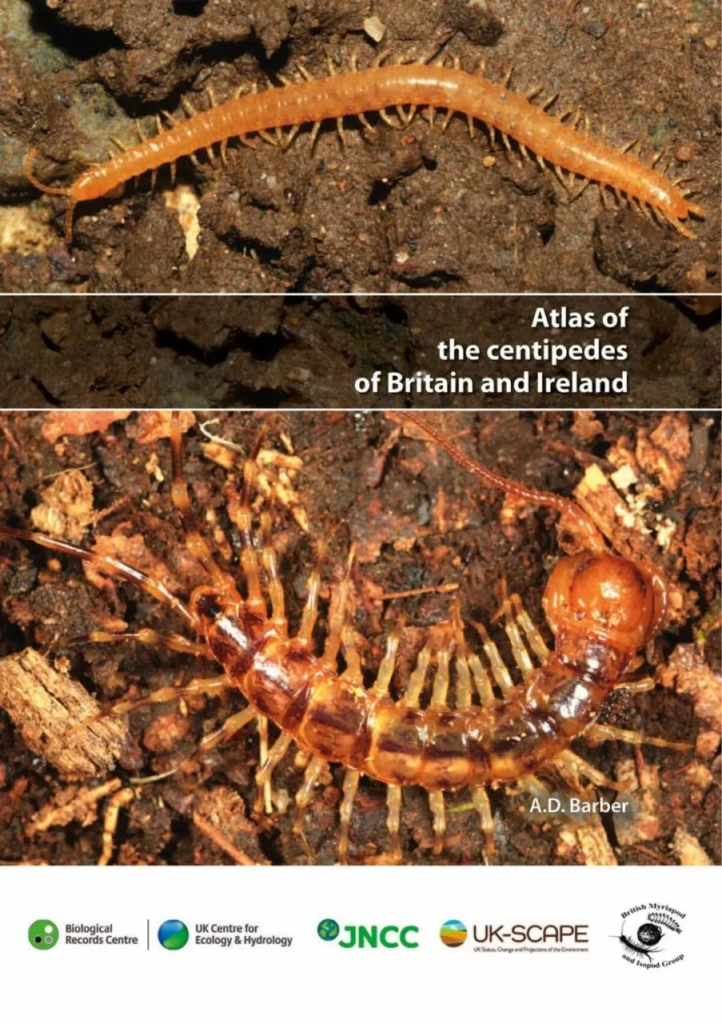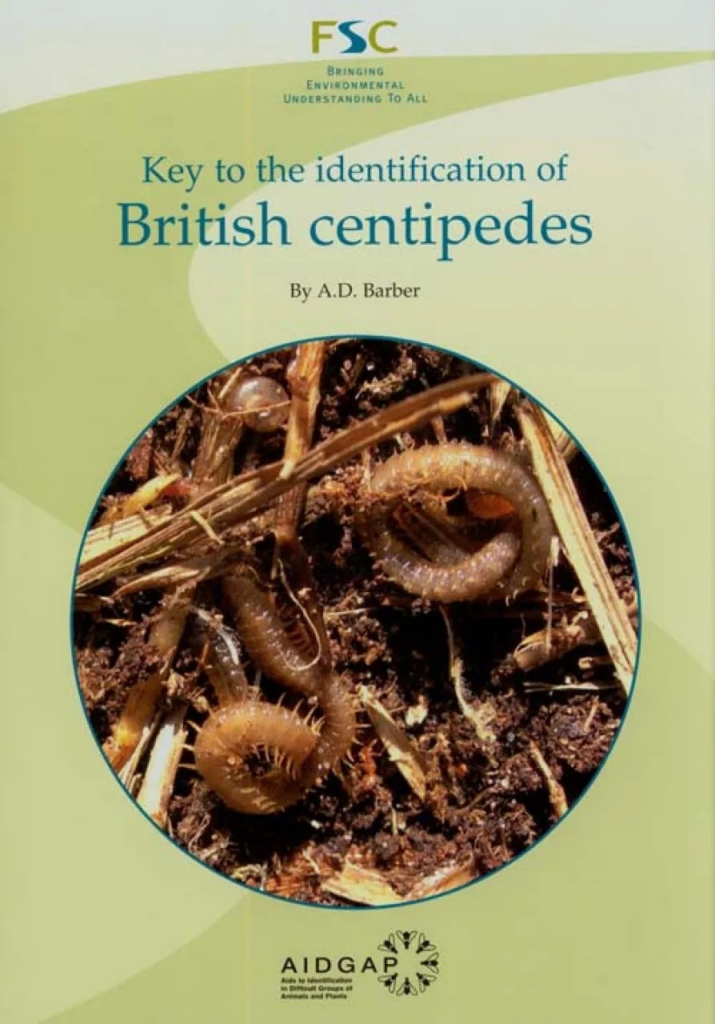If you look under logs, stones or through piles of leaf litter, you may find a Myriapod (a type of arthropod with many legs, related to insects and spiders). Although these misunderstood animals may strike fear in some, these invertebrates play a vital role in maintaining our ecosystems. One of their main roles lies in nutrient cycling, where they feed on organic matter and detritus, breaking materials down into a simpler form and thus releasing nutrition back into the soil. They also play an important role, both as predators and prey, in the ecosystem’s food chain and are often celebrated for their effectiveness as a natural biocontrol agent.
The UK has more than 50 species of centipede. This group are generally carnivorous and have around fifteen pairs of legs, with one pair present on each body segment. They have large forcipules, a pair of pincer-like, modified front legs that are used to inject venom into their prey. There are around 65 species of millipede in the UK, which can be distinguished by their shorter, more clubbed antennae, the absence of forcipules and their tendency to have two pairs of legs on most body segments.
Here, we look at a few species of centipede and millipede that can be found in the UK, detailing ways to ID them and where they can be found.
Common Centipede (Lithobius forficatus)
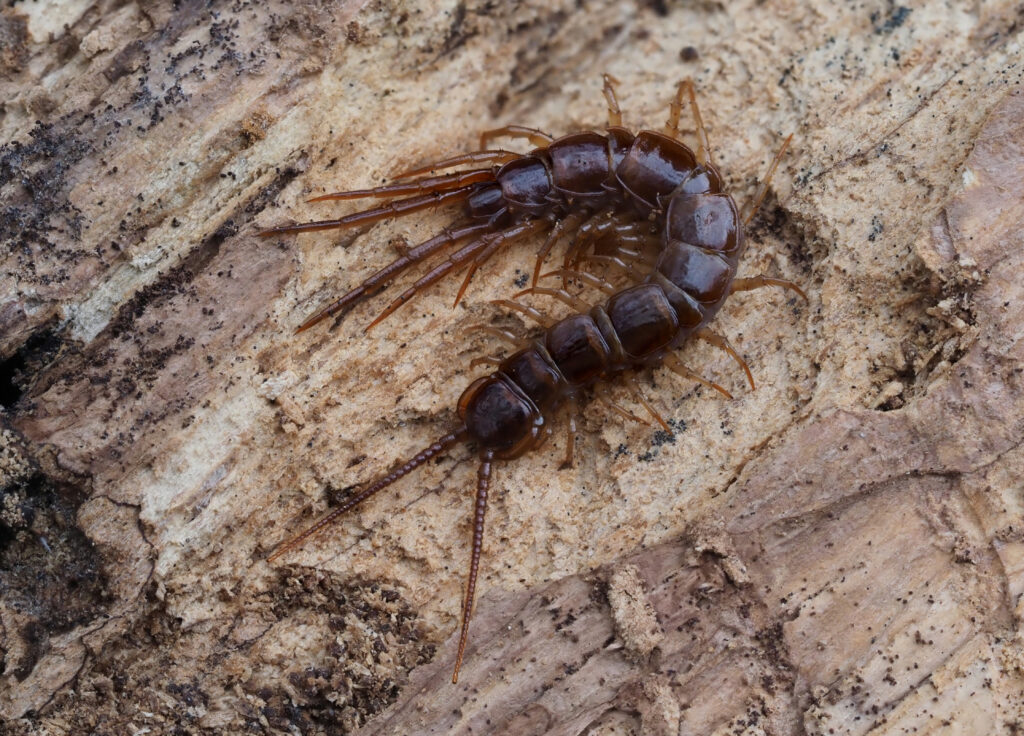
ID Notes: Also known as the Brown Centipede, Lithobius forficatus is one the largest centipede species in the UK, growing up to 3cm in length. They have long, thin segmented bodies that are a reddish-chestnut brown colour. Each segment has one pair of legs, with 15 pairs in total. They have long antennae and an elongated pair of back legs, giving the illusion of a second pair of antennae at the rear of the body. This species is best identified by thorned projections on the outer edges of the 9th, 11th and 13th segments.
Distribution: Very common and widespread across the UK. This species can be found year-round but is most numerous in spring and autumn. They can be found in a variety of habitats, including woodland, grassland and gardens, and will spend most of the day nesting in soil or sheltered areas under stones, bark or dead wood before emerging at night to hunt for prey.
Stone Centipede (Lithobius microps)
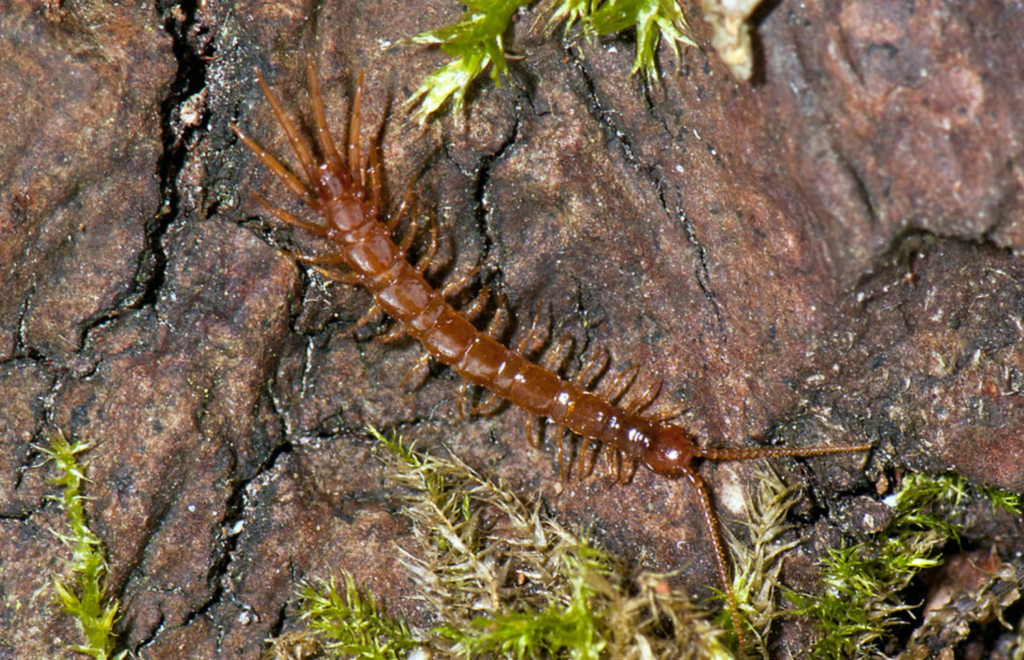
ID Notes: Similar in colour to the Common Centipede, Lithobius microps is a ground-dwelling species that is usually chestnut brown in colour, although red and orange varieties can also be found. It is much smaller than its common cousin, reaching around 1cm in length, and its 15 pairs of legs are slightly shorter and paler than those of the Common Centipede.
Distribution: Fairly common in the south of Britain. This fast-moving species can be found year-round in gardens and bare soil in rotting wood and under rocks and stones.
Banded Centipede (Lithobius variegatus)
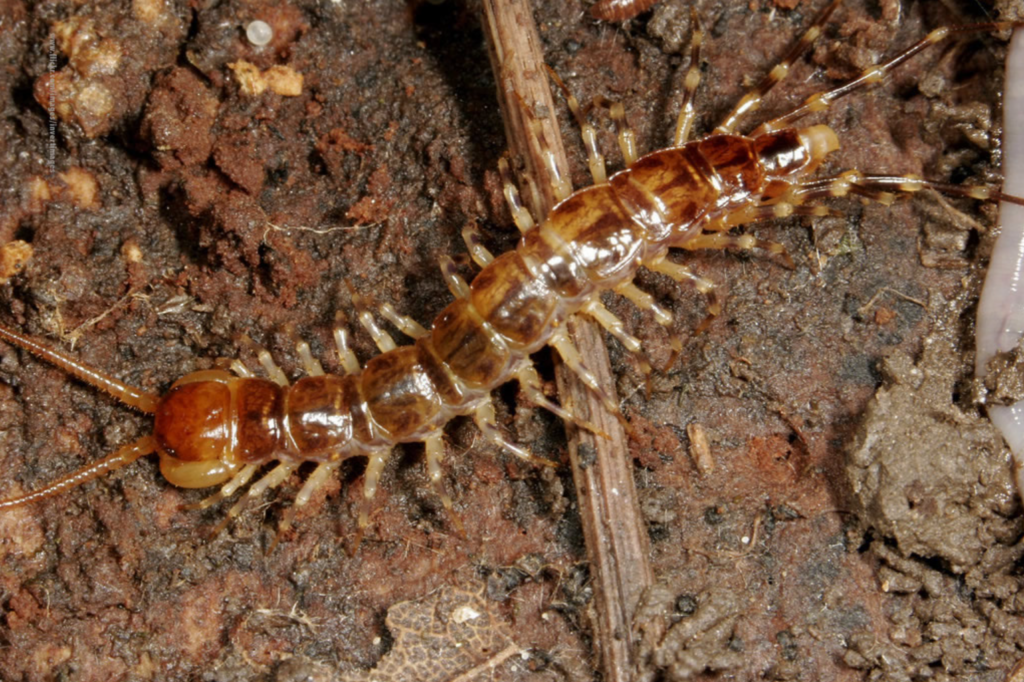
ID Notes: Measuring up to 3cm in length, this small, yellow-brown centipede is easily distinguished by the banding on its legs – these alternate pale and dark, are usually brown in colour and are more obvious on the rear pairs. It has a dark band running centrally along its back and much larger jaws when compared to other Lithobius species.
Distribution: Widespread and common in the UK. It can be found year-round living under stones and decaying plant matter during the day, and is commonly found in garden compost heaps.
Flat-backed Millipede (Polydesmus angustus)
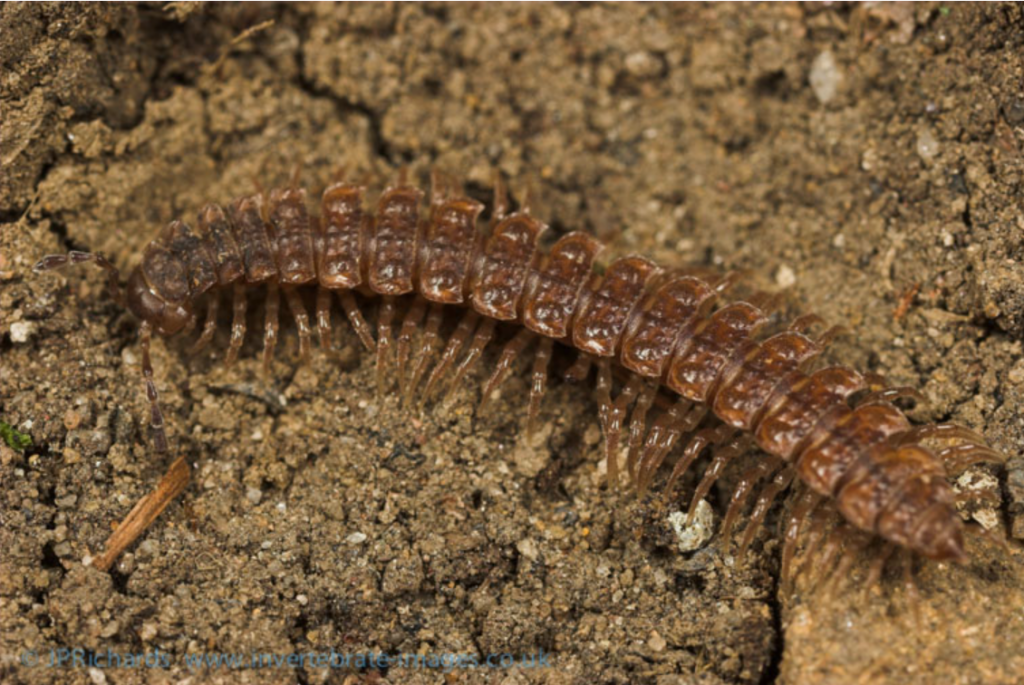
ID Notes: This millipede grows to around 2.5cm in length, with a width of 4mm. It has a long, flat body with around 20 body segments, each containing between one and two pairs of legs. It is orange-brown in colour and has numerous off-white coloured legs.
Distribution: Widespread and common in the UK. They can be found in almost any environment in which millipedes occur, with frequent sightings in woodland under dead wood and leaf litter.
Striped Millipede (Ommatoiulus sabulosus)
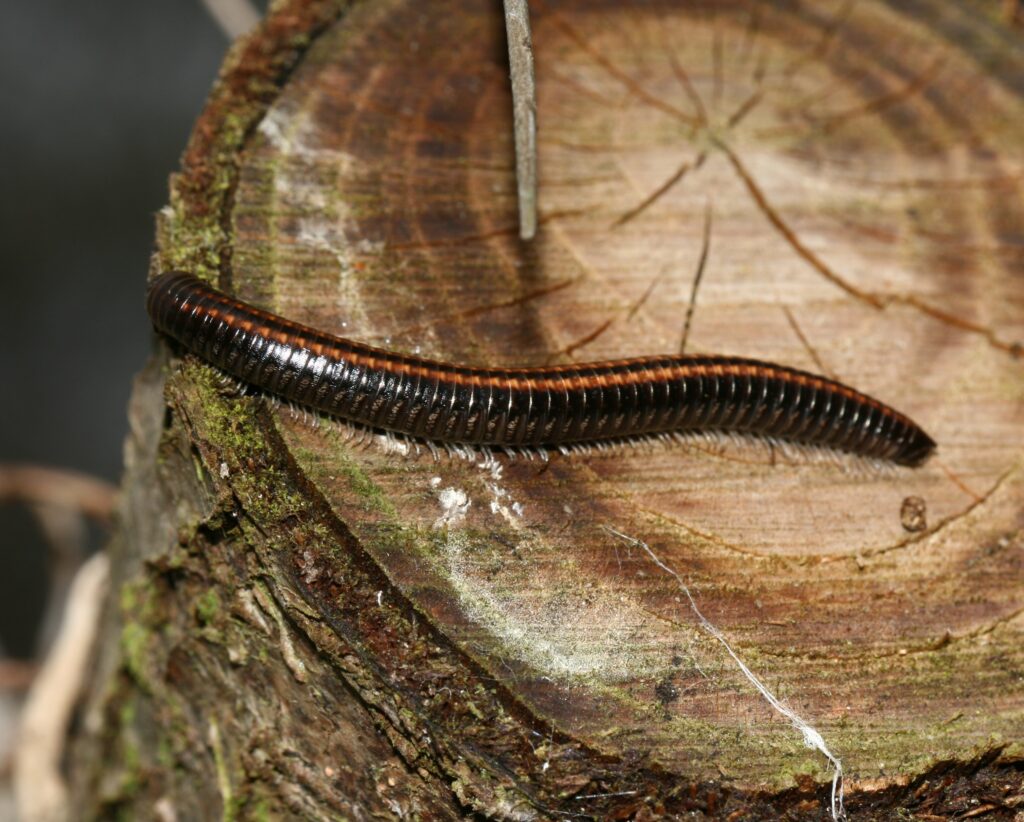
ID Notes: Up to 3cm in length, this species is one of the largest millipedes found in Britain. It is thick and cylindrical in shape, usually dark brown to black in colour. It has orange coloured stripes running the length of its body on its back, but these can sometimes appear as a series of orange patches.
Distribution: Common and widespread throughout Britain and Ireland. The Striped Millipede can be found year-round in meadows, fields and woodland under leaf litter and logs. It is also known to climb on walls and trees to feed on algae and can be found during the day.
White-legged Snake Millipede (Tachypodoiulus niger)
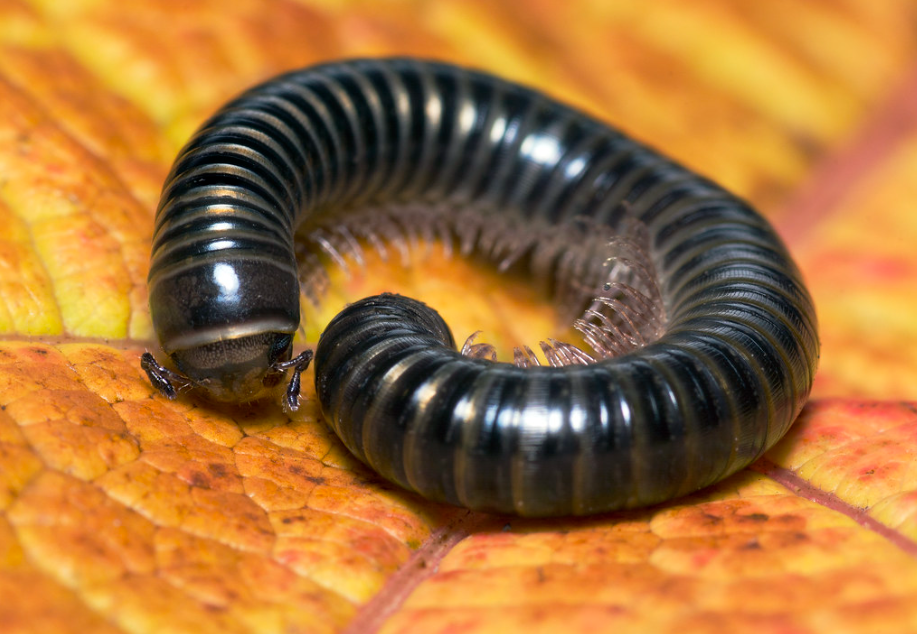
ID Notes: The White-legged Snake Millipede can grow to around 6cm in length. It is tubular-shaped with a shiny black body and contrasting white legs, of which there are around 100. Immature millipedes are brown, often with pale, longitudinal stripes down the back. It has a pointed telson (legless tail segment) at the end of its body.
Distribution: Common and widespread in the UK. This species can be found year-round in most habitats containing millipedes, including woodland and gardens, or areas with rocks or rotting vegetation to provide cover.
Additional Reading
Atlas of the Centipedes of Britain and Ireland
Paperback | January 2023
A comprehensive atlas of the 55 species of centipede in Britain and Ireland,. tThis guide provides species accounts, distribution maps and detailed colour photographs for easy identification.
Key to the Identification of British Centipedes
Paperback | December 2008
An identification guide from the Field Studies Council AIDGAP series, this book contains keys to the 57 species of centipede found in Britain.

